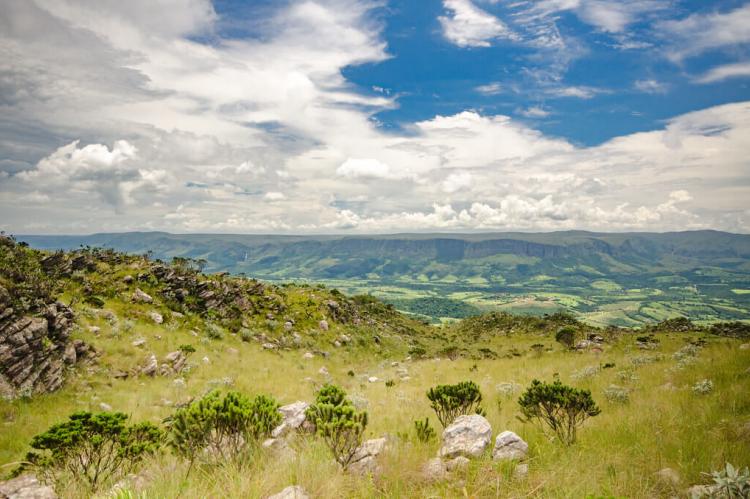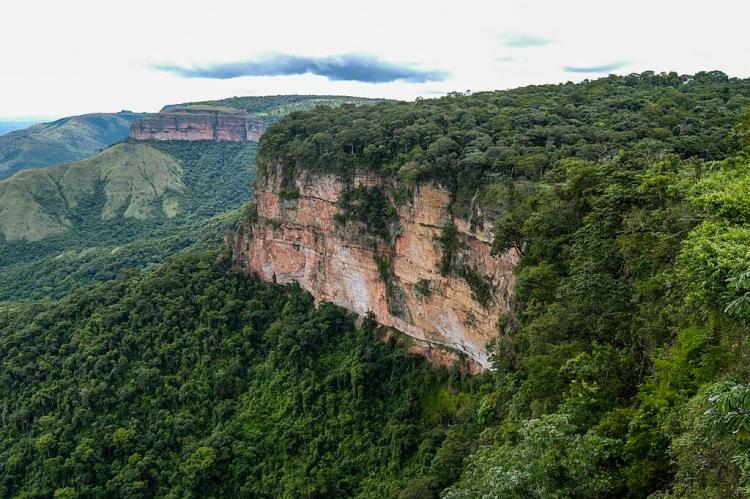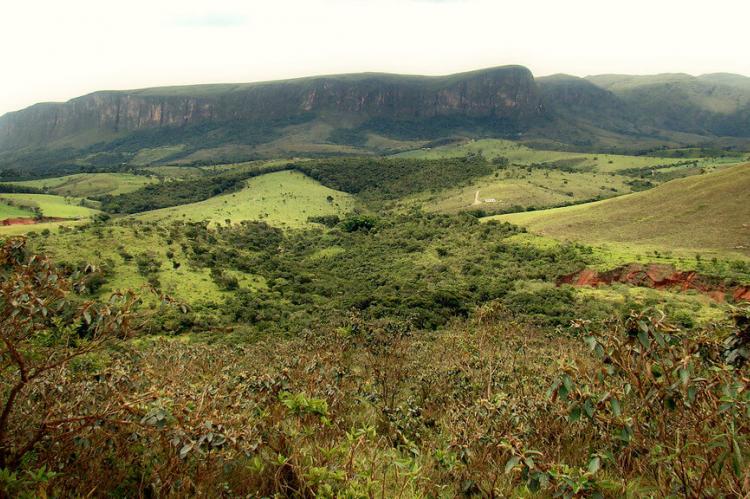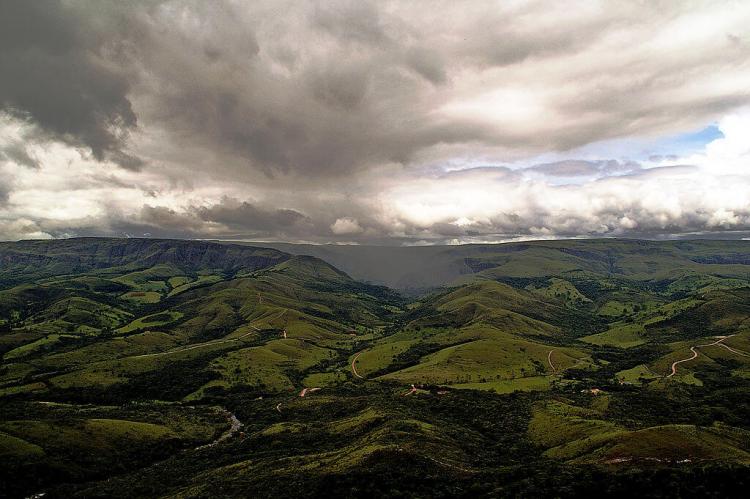Serra da Canastra: Mountain Range and National Park (Brazil)
The Serra da Canastra is a mountain range in southeastern Brazil, located within the Brazilian Highlands. Its topography includes cliffs and dramatic waterfalls. Serra da Canastra National Park protects this vital watershed, the source of the headwaters of the São Francisco River.
Serra da Canastra
The Serra da Canastra is a mountain range in western Minas Gerais state in southeastern Brazil. Located within the Brazilian Highlands, the Canastra mountains extend 240 km (150 mi) from the Goías state border in the north to the Grande River in the south, rising to an average elevation of 1,800 m (6,000 ft).
Forming the eastern border of the Triângulo Mineiro grassland region, the Serra da Canastra is the source of the São Francisco River. It contains calcium, lead, iron, thorium, zinc, and diamond deposits. A federal highway extends along its eastern slopes, and a second highway traverses the mountains east-west.
Serra da Canastra National Park
Serra da Canastra National Park was created in 1972 and protects 197,810 ha (488,800 acres) of the watershed in the municipalities of São Roque de Minas, Sacramento, Capitólio, Vargem Bonita, São João Batista do Glória, and Delfinópolis in the state of Minas Gerais.
The National Park is located on the watershed between the São Francisco and Paraná rivers. It preserves the headwaters of the São Francisco River, which flows east from the Park. In the south, it feeds the Rio Grande, and in the north, the Araguari River, a tributary of the Paranaíba River. The Rio Grande and Paranaíba flow west and join to form the Paraná River.
Altitude within the Serra da Canastra National Park ranges from 750 to 1,490 m (2,460 to 4,890 ft). The topography includes cliffs with dramatic waterfalls. Casca D'anta, with a drop of 186 m (610 ft), is the first waterfall of the São Francisco River.
Vegetation is primarily rocky fields and cerrado, with clumps of riparian forest in the valleys and ravines.
Temperatures range from 1 - 29 ° C (34 - 84 ° F) and average 18 ° C (64 ° F). The average annual rainfall is 1,250 mm (49 in).
Flora and Fauna
There are 45 endemic species of flora. These include members of the genera Hololepis, Inulopsis, Aspilia, Senecio, Stomatanthes, Campuloclinium, Stevia, Chinolaena, Chrysolaena, Ichtthyothere, Lessigianthus, Sinningia, Eriope, Habranthus, Ilex, Agalinis, and Eryngium.
Flora also include Barbacenia fulva, Barbacenia lymansmithii, Chaetostoma canastrensis, Miconia angelana, Microlicia canastrensis, Microlicia flava, Microlicia scoparia, Microlicia sp. nov, Svitramia sp., and Tibouchina sp. nov.
Fauna includes bush dog, pampas deer, maned wolf, giant anteater, otter, titi, giant armadillo (Priodontes maximus), cougar, Brazilian merganser, king vulture, toco toucan (Ramphastos toco), guan, crested caracara (Caracara plancus), greater rhea, and seriema.
Endemic herpetofauna (reptiles and amphibians) include Hyla ibitiguara, Cinax canastrensis, and Odontophrynus sp.
Protected birds include the cock-tailed tyrant (Alectrurus tricolor), vinaceous-breasted amazon (Amazona vinacea), black-masked finch (Coryphaspiza melanotis), Brazilian merganser (Mergus octosetaceus), lesser nothura (Nothura minor), and the dwarf tinkled (Taoniscus nanus).
Other protected species include the maned wolf (Chrysocyon brachyurus), cougar (Puma concolor), oncilla (Leopardus tigrinus), ocelot (Leopardus pardalis), colocolo (Leopardus colocolo), giant armadillo (Priodontes maximus), giant anteater (Myrmecophaga tridactyla), and the frog (Phyllomedusa ayeaye).





